In December 2023, Reef Recruits and JCU TropWATER co-led our inaugural Spawning School, a practical learning program on how to raise coral larvae for reef restoration with Traditional Custodians of the Great Barrier Reef. With a core group of five rangers from Gunggandji-Mandingalbay Yidinji and Yirrganydji peoples and other shorter-term visitors, we had a fantastic week getting to know each other and sharing skills in reef recovery techniques.
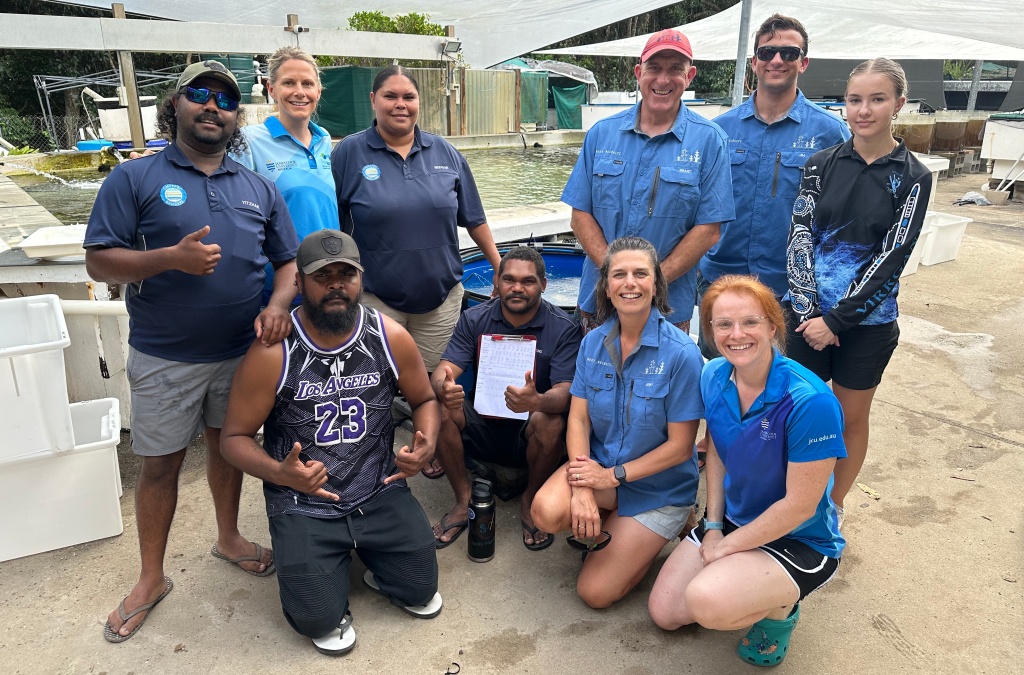
And also, we colour coordinated like champions. Back row: Yitzhak, Katie, Meegan, Grant, Jim and Taylah. Front row: Djullja, Stirling, Kerry and Abbi.
Getting ready…
Before you can raise coral larvae, first you need adult corals about to spawn. To maximise accessible learning opportunities, we collected 10 adult Acropora kenti corals from Vlasoff Reef and brought them back to the JCU EduQuarium for spawning. Corals were sampled in the field to ensure we were only collecting corals that were about to spawn, then the Spawning School group practised this technique of checking for ripe eggs back at JCU in the lead up to spawning nights.
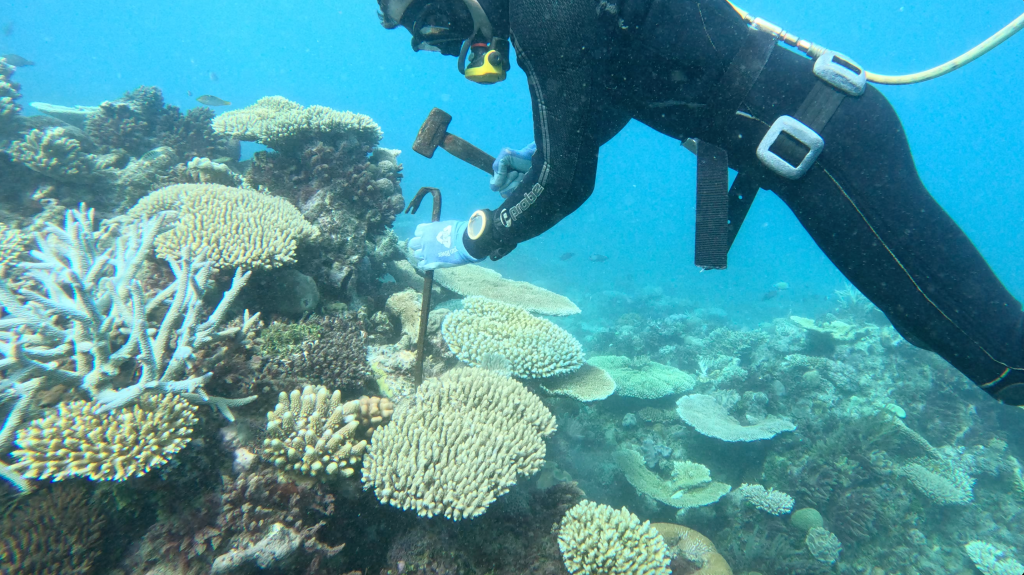
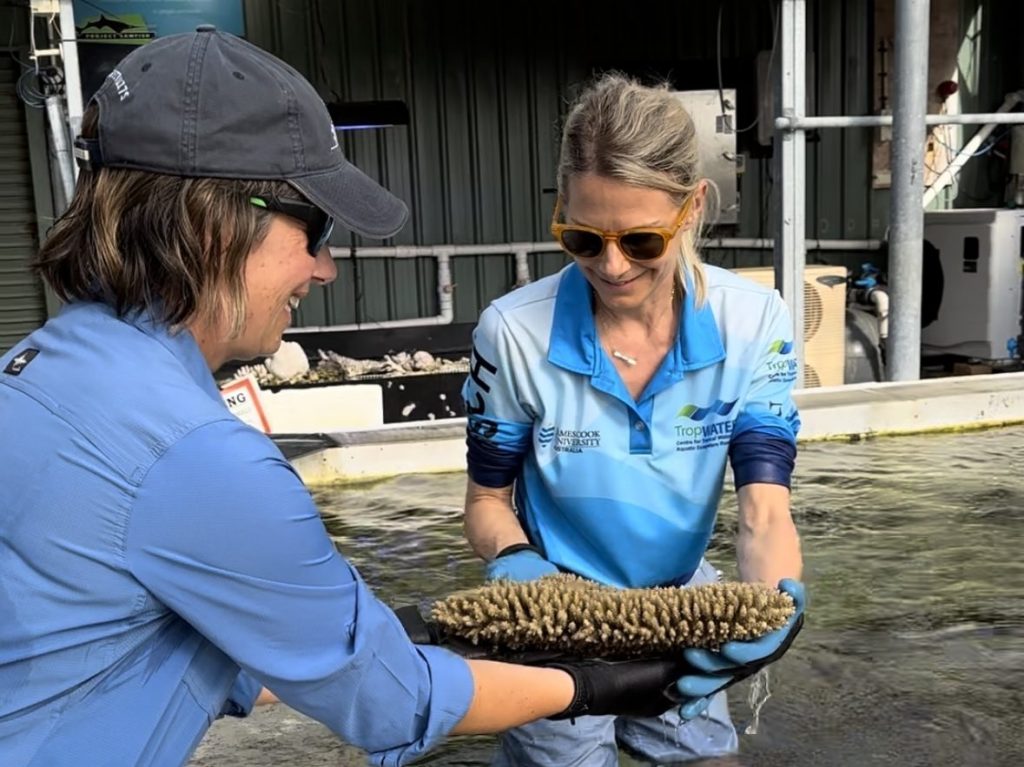
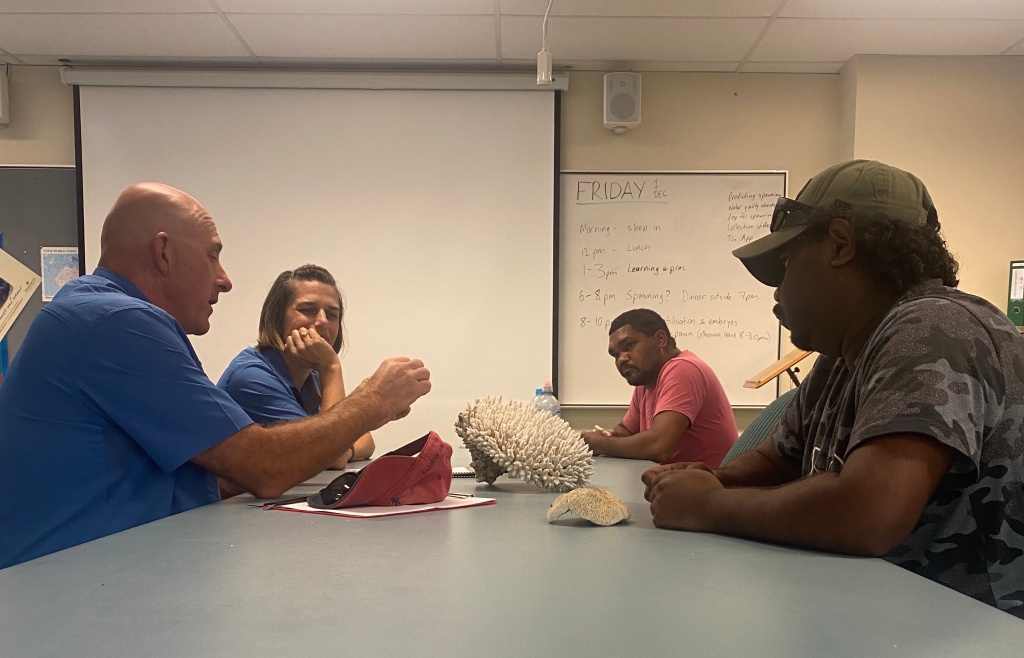
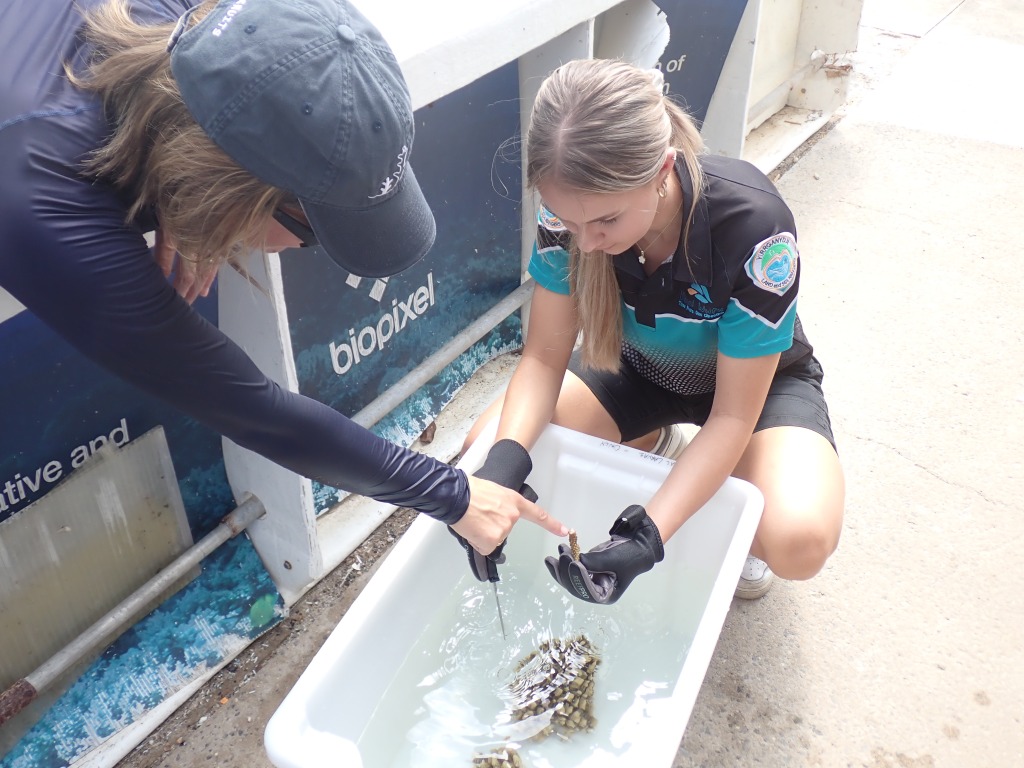

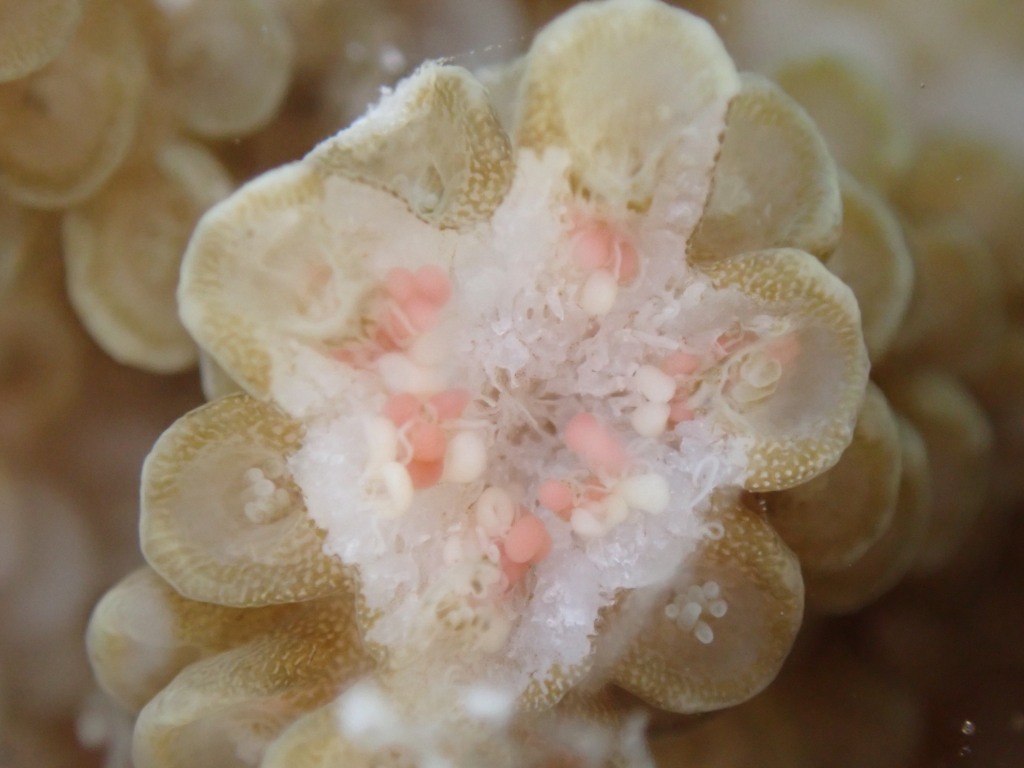
Spawning nights
In the Cairns-Port Douglas region, mass synchronised coral spawning occurs several nights after the full moons in October and November (and sometimes in December, depending on when the full moon falls).
Our collected corals spawned on the 6th, 7th and 8th nights after the full moon on 27 November. On spawning nights, we isolated our corals into individual tubs just before sunset, then left them quietly alone in the dark to start spawning. When checking progress, we used red light to avoid disrupting spawning behaviour.
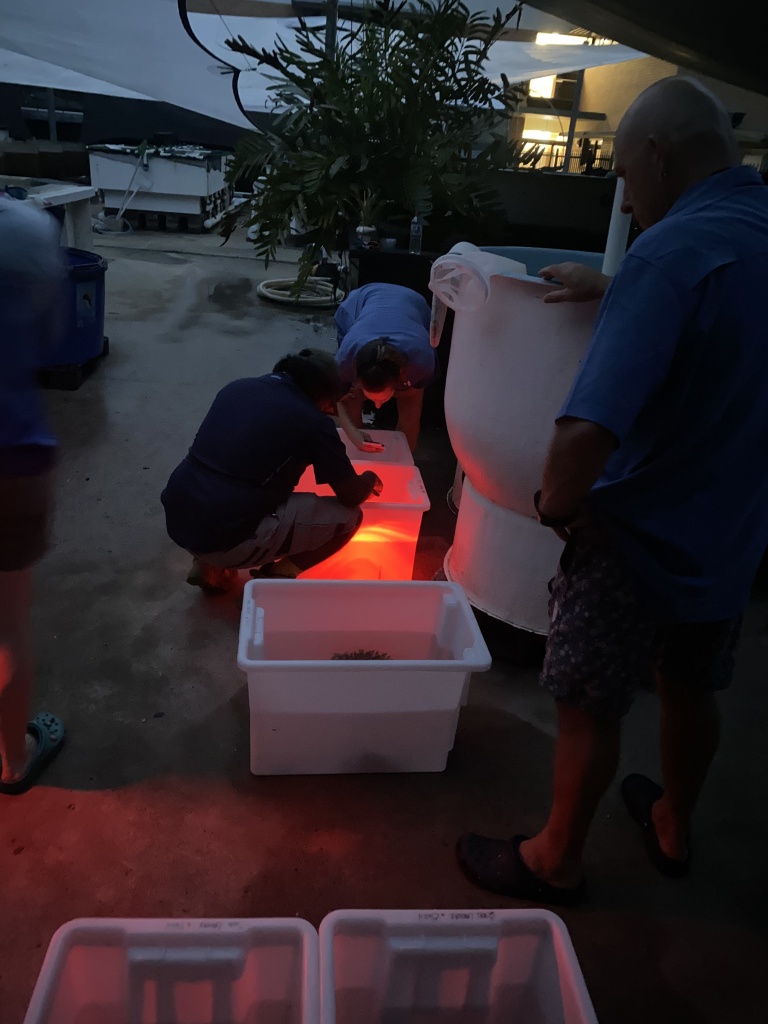

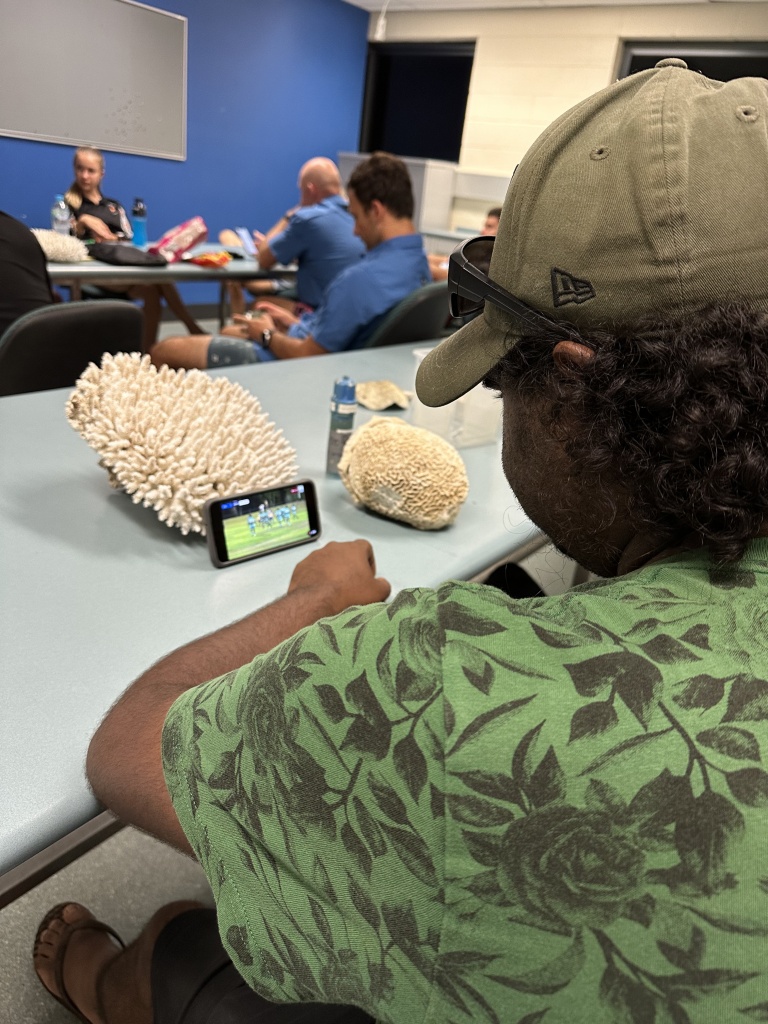
After each coral had finished spawning, we skimmed the floating spawn bundles off the surface using plastic cups. Collected bundles were pooled into one container where the bundles gradually broke apart, allowing eggs and sperm from different corals to mix.
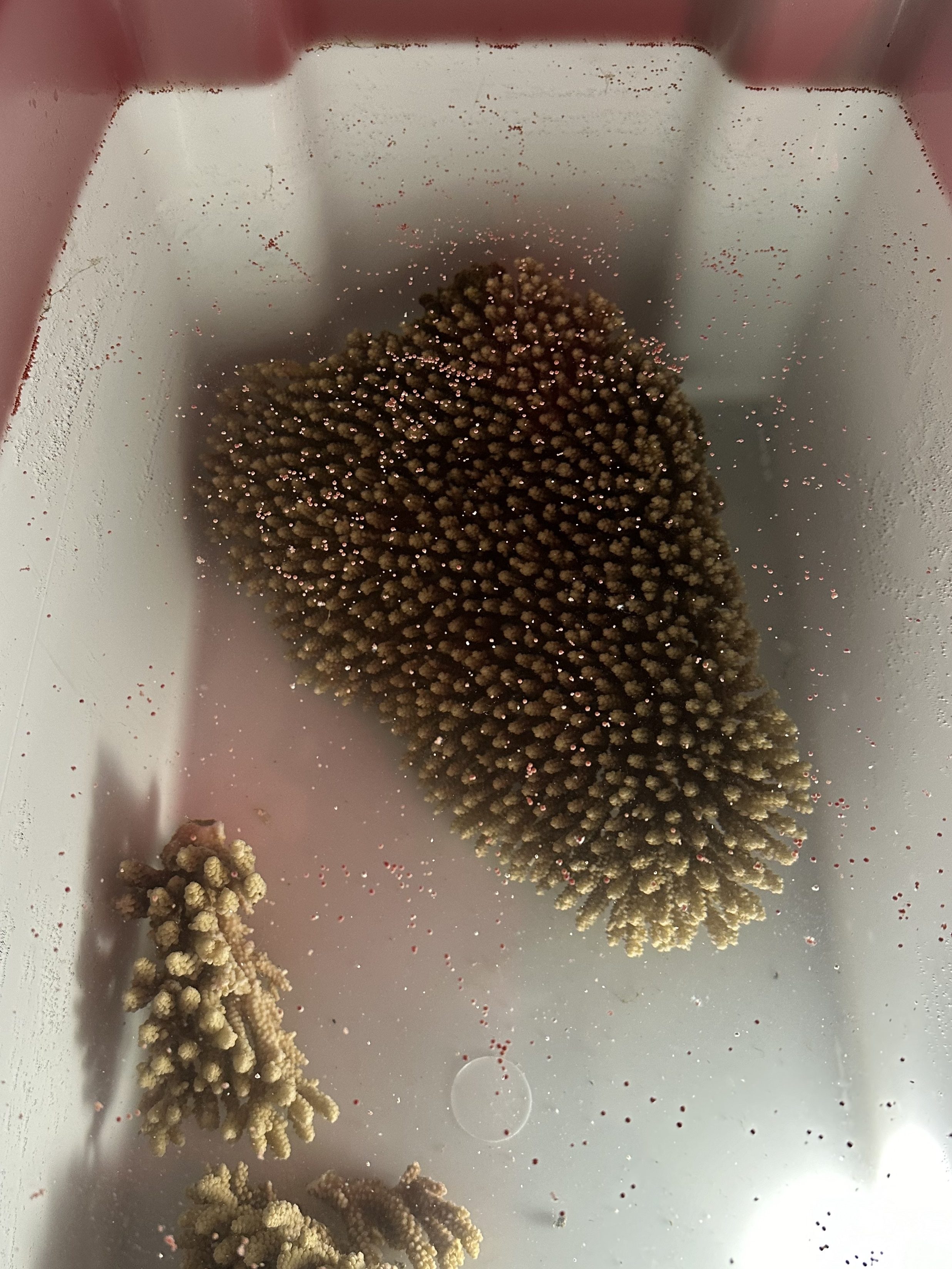

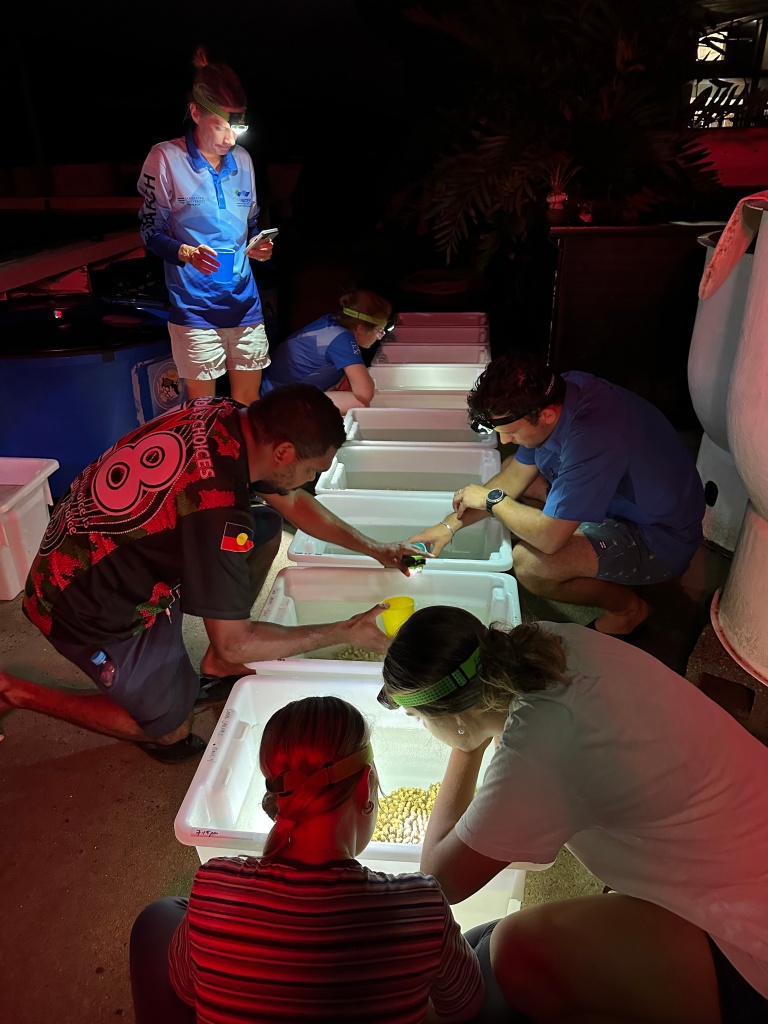
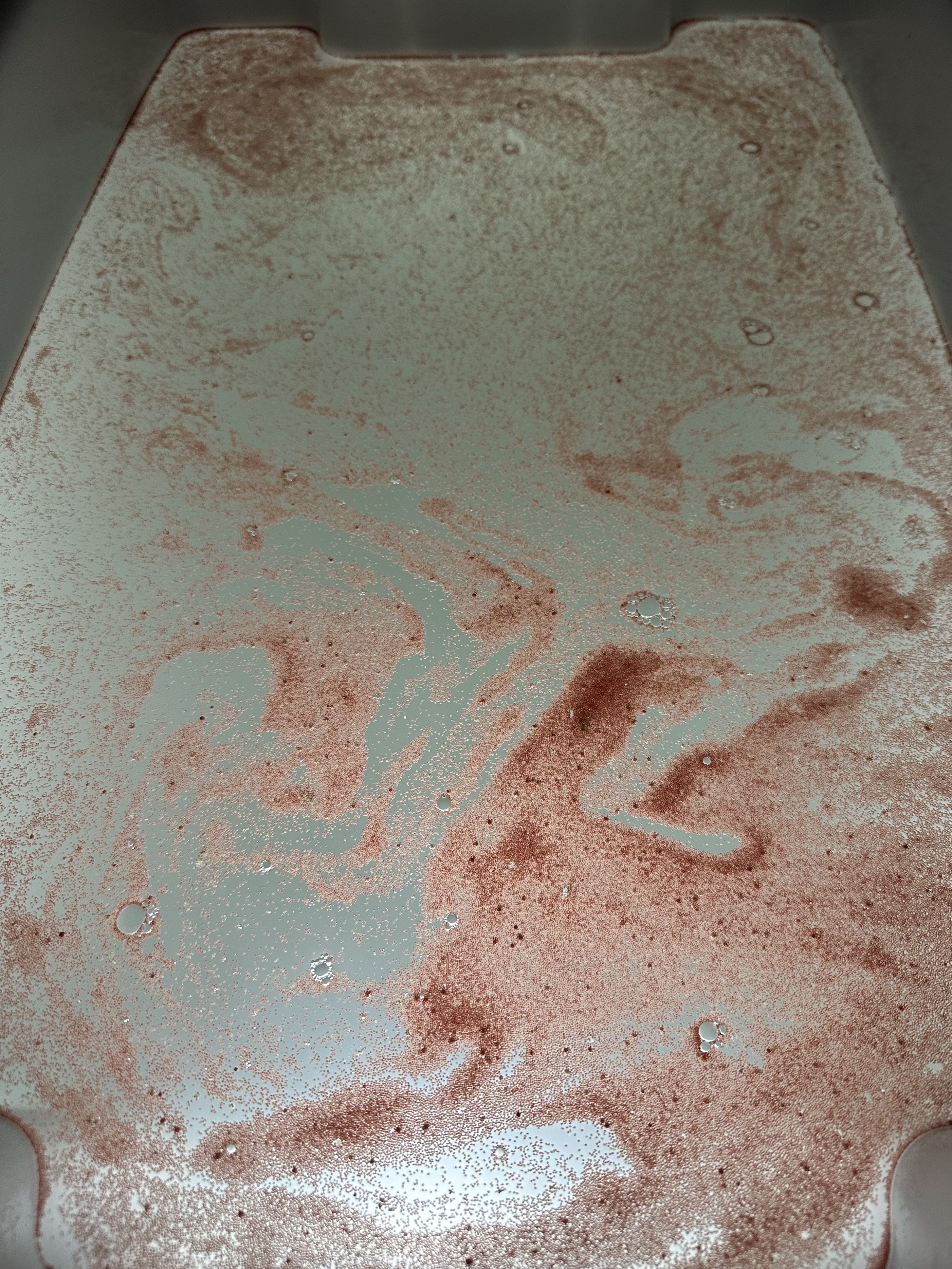
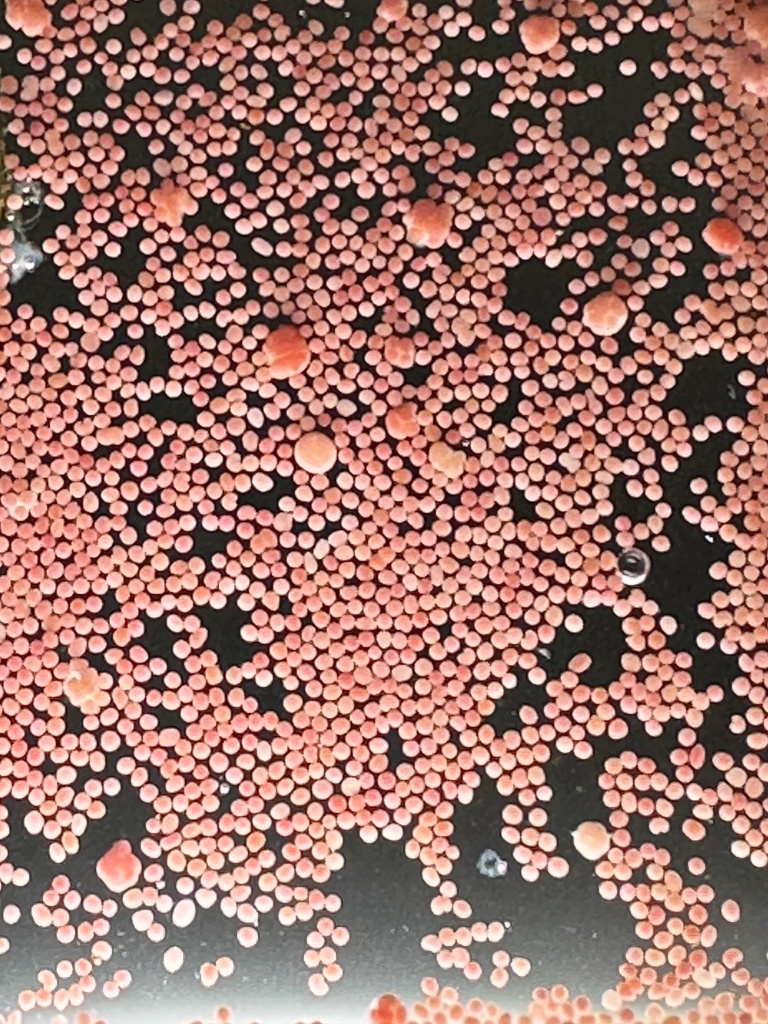

Looking after larvae
As our larvae matured through their developmental stages of early embryos through to active swimmers, we monitored our larval pools multiple times a day to ensure water conditions and quality were suitable.

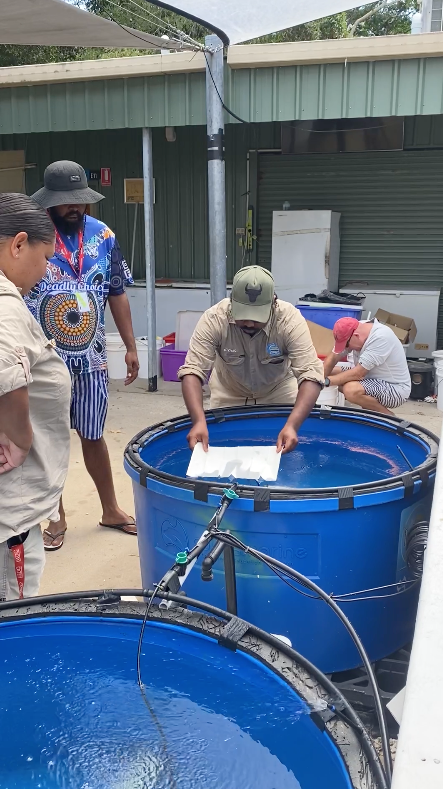
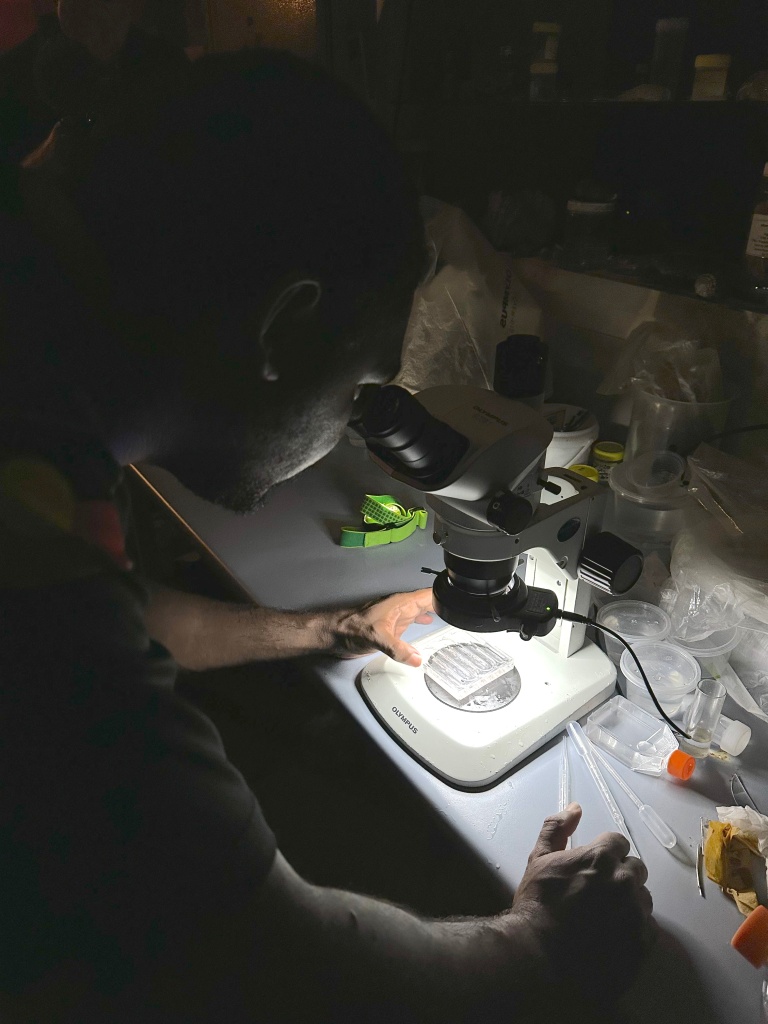
In between the tank-based tasks of caring for our coral larvae as they matured, we spent time in the classroom and lab discussing coral biology and ecology, practical needs of corals in aquaculture, factors that influence timing of coral spawning and coral reef restoration experimental methods and techniques, including monitoring settlement and growth in juvenile corals.
Science in action
We also worked through some experiments to investigate how time of day might influence settlement behaviour in coral larvae, and concluded with settling our remaining coral larvae onto devices used in reef restoration that have been developed by colleagues at the Australian Institute for Marine Science under the Australian Government’s Reef Restoration and Adaptation Program. This work provided great opportunities for the Spawning School group to gain practical experience in planning and carrying out scientific investigations, including experimental design, experimental set up and delivery, monitoring and data entry, as well as hands-on familiarity with handling and manipulating fragile coral larvae.
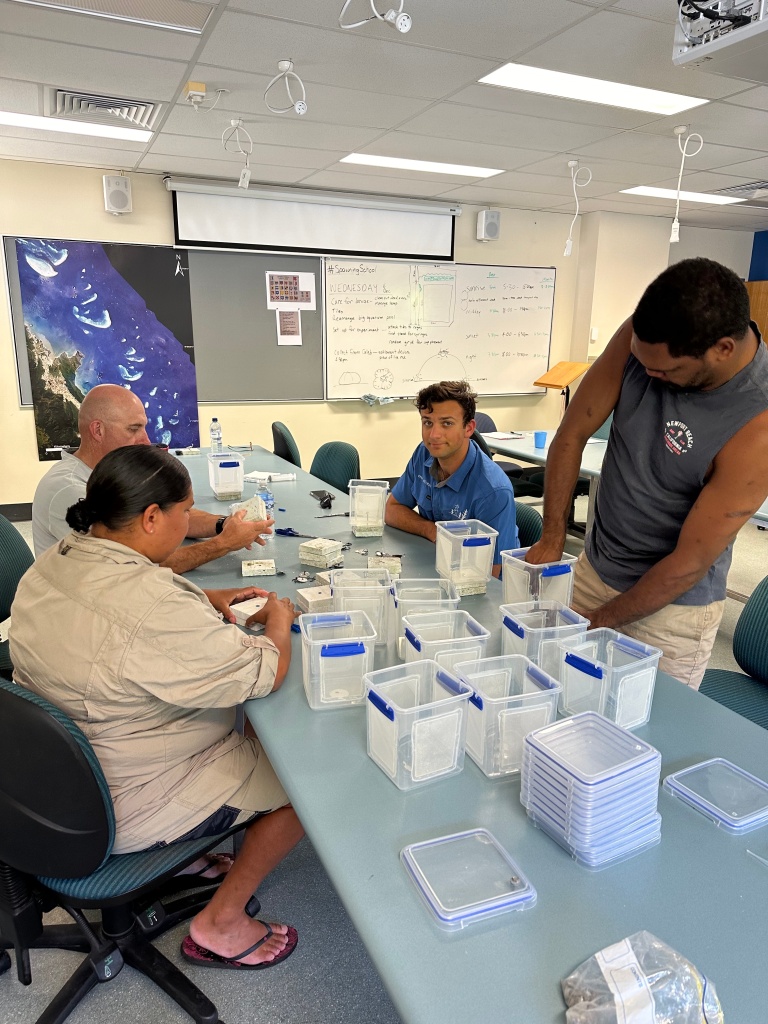
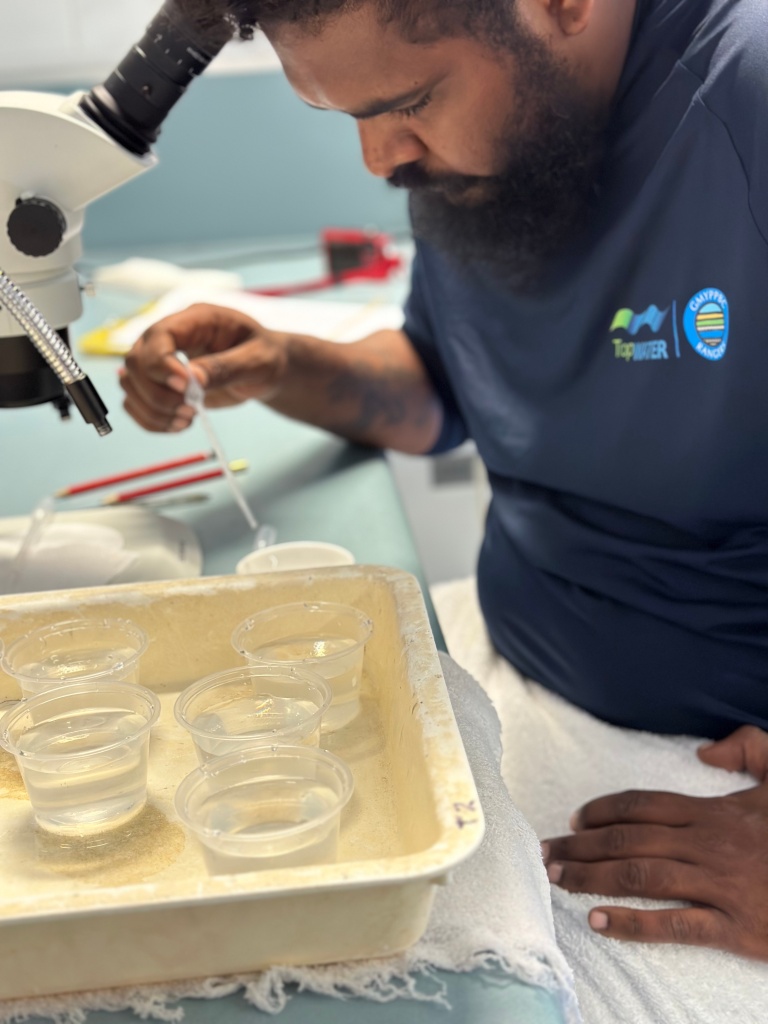
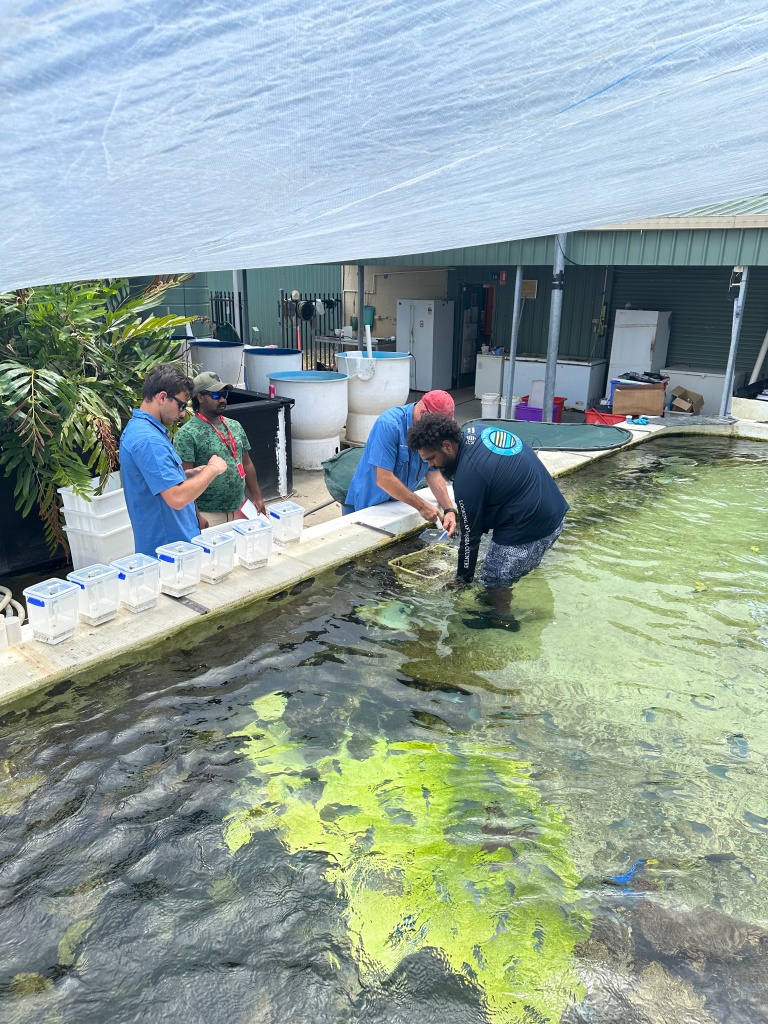

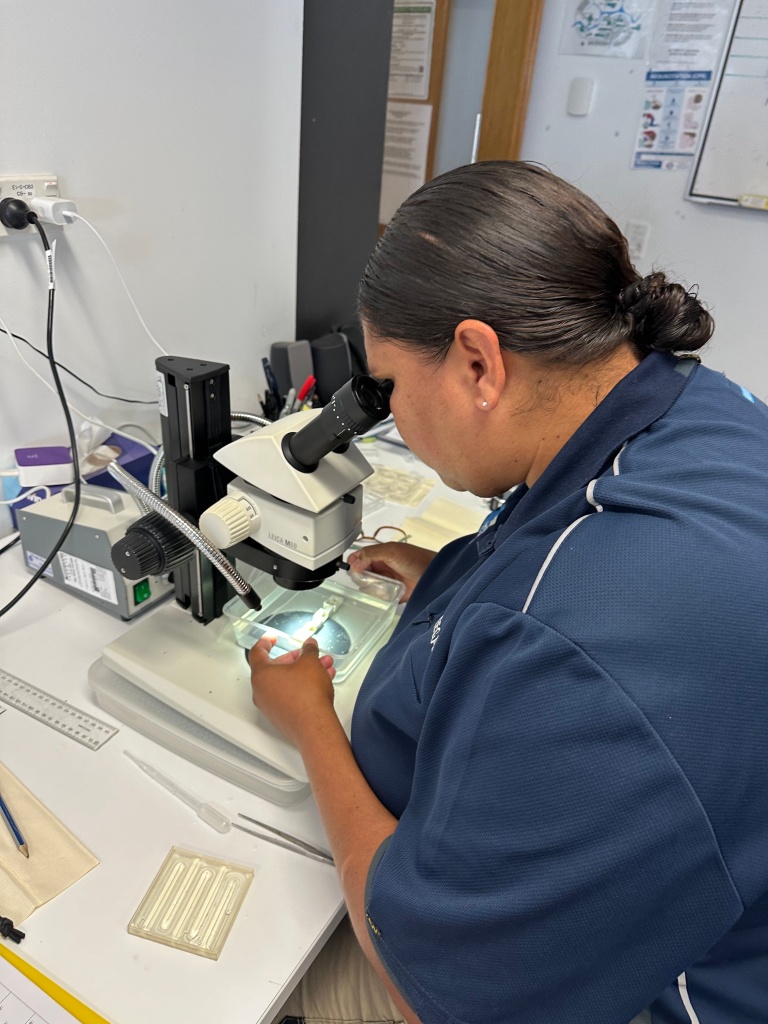

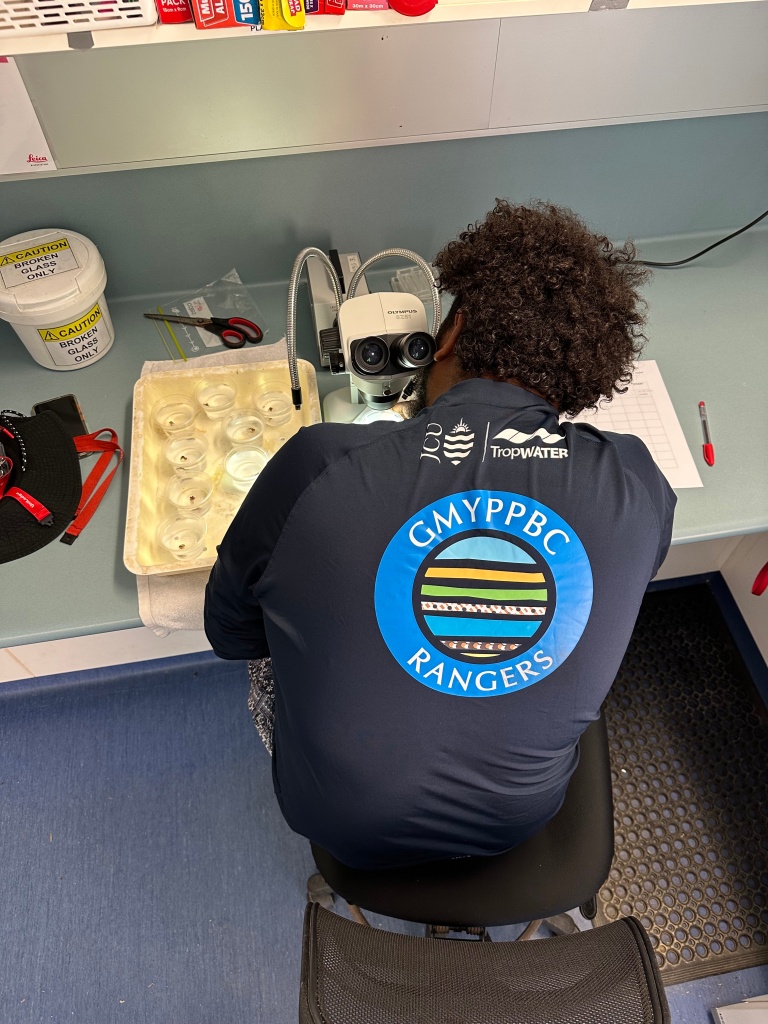


In between work with our new larvae, we counted and measured one year old juvenile corals from settlement tiles used in our 2022 Reef Cooperative project on Hastings Reef. This was a great opportunity for the Spawning School group to observe and monitor how corals grow and develop in their first year of life on the reef.

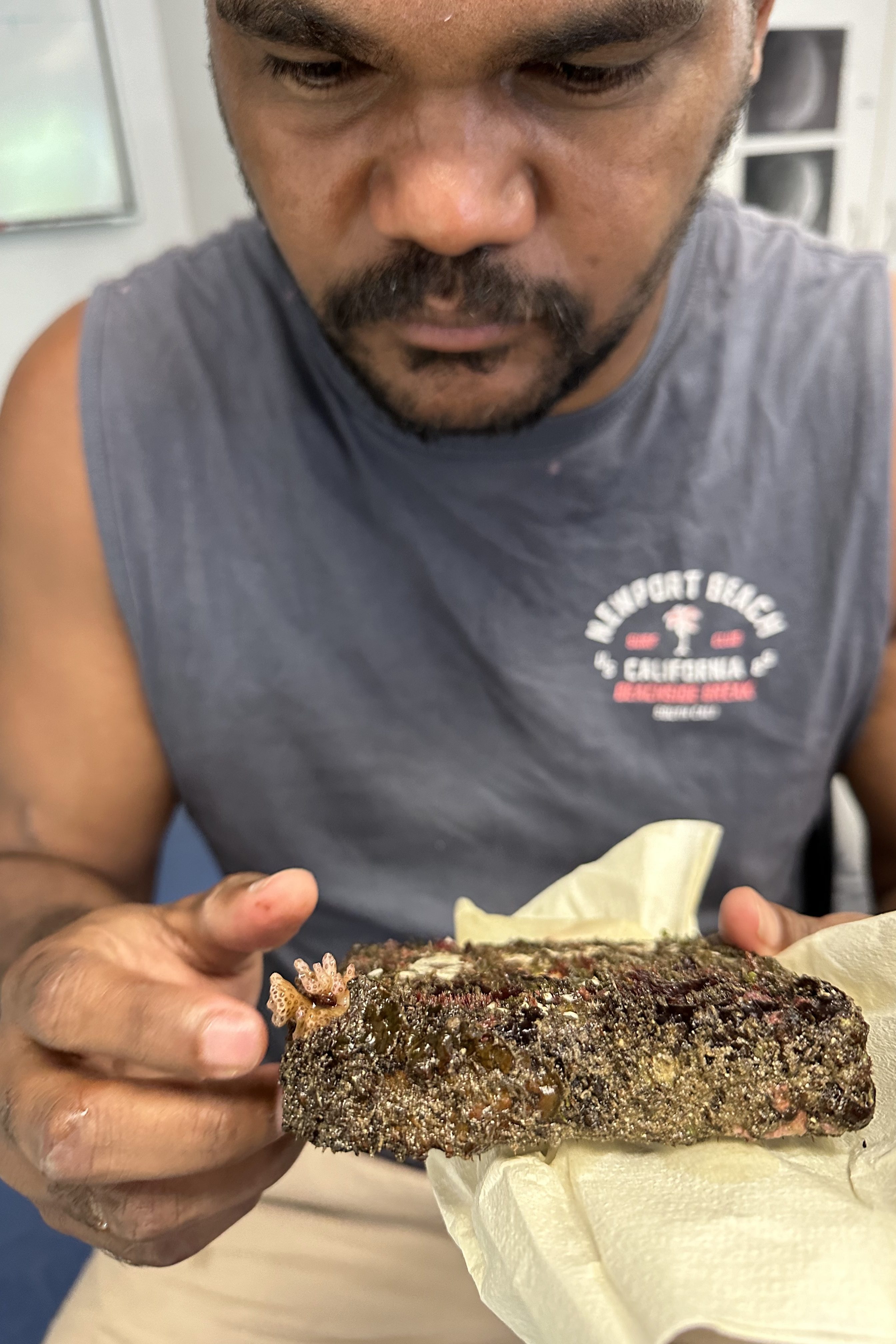
Sharing the journey
As well as our core Spawning School participants who either stayed on campus or came in daily from Cairns, we had some notable visitors. It was fantastic to have Yirrganydji Elder (Dr) Uncle Bernie Singleton come and give a Welcome to Country on the first day of Spawning School, and hear his stories about connections to the reef and growing up in Yarrabah.

Later in the week, we hosted a full bus load of all ages from the Yarrabah community, joined by more of the GMY rangers and Gunggandji rangers, for Community Day. The Spawning School team and GMY ranger participants shared what we’d been learning about coral spawning and coral aquaculture, then took community members on a hands-on tour of the labs and aquaculture facilities where our corals and larvae were. It was a really special day for connecting with elders, adults, kids, and rangers, with lots of interest to explore further opportunities.
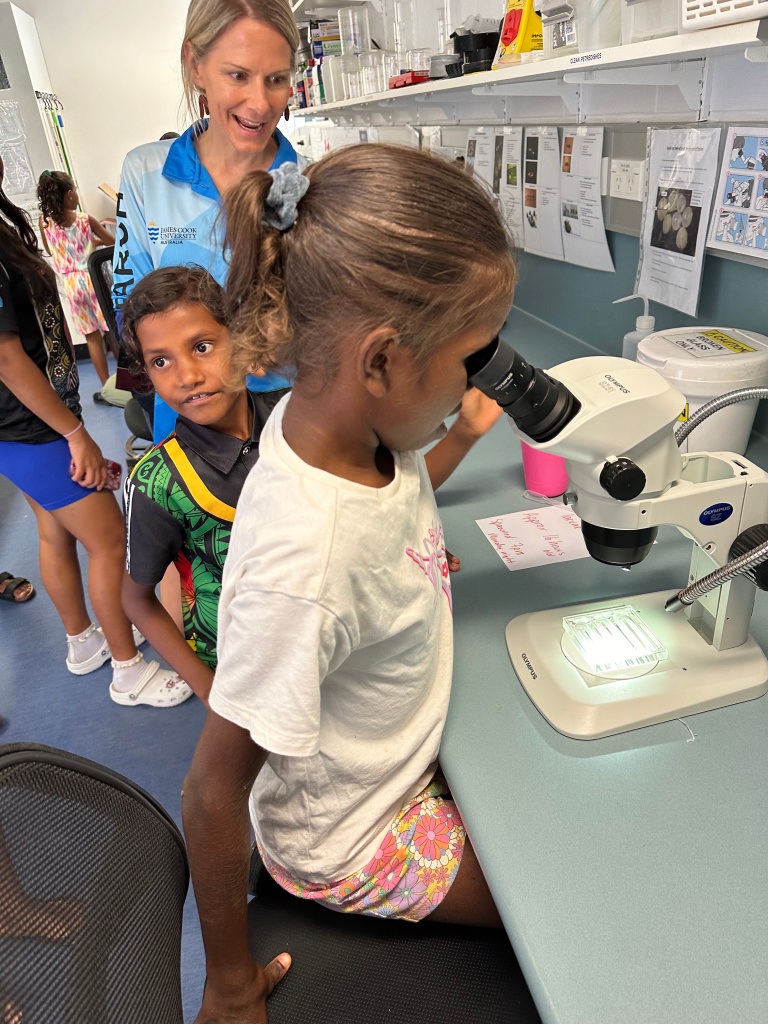
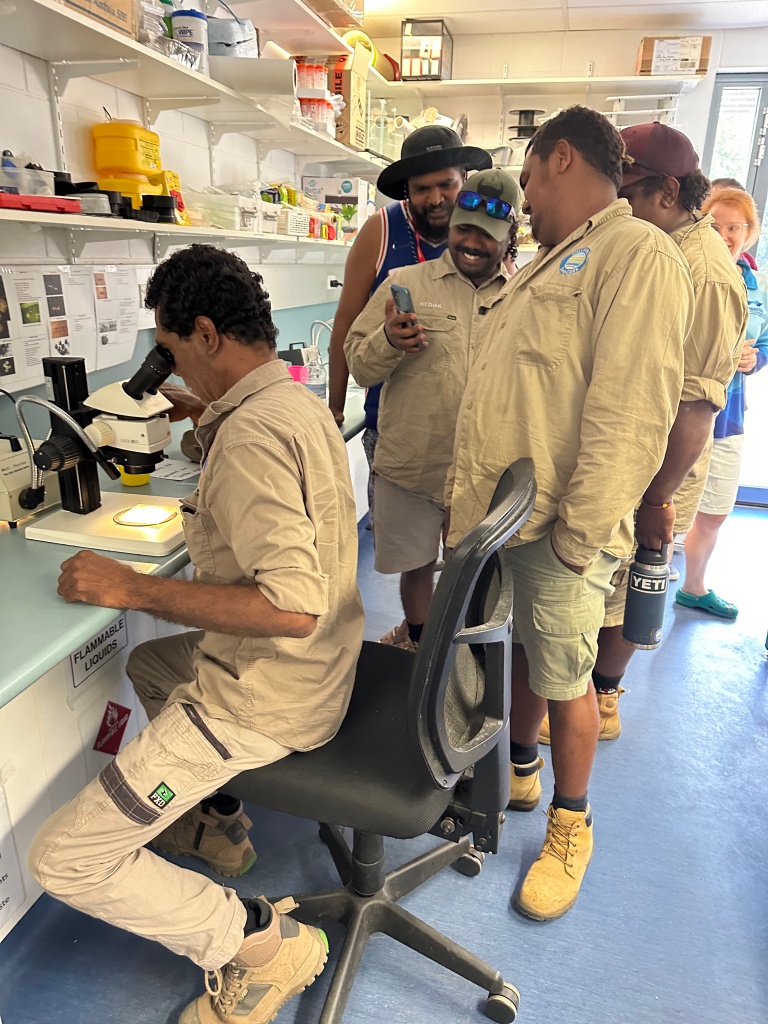
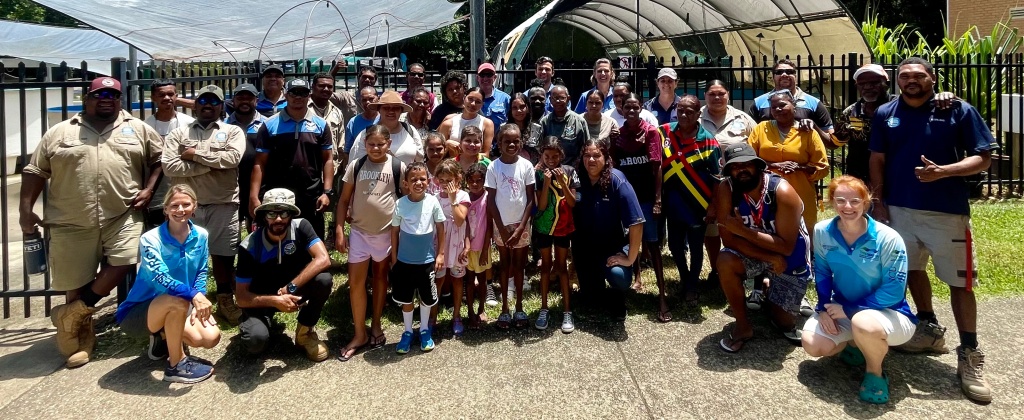
On the media side, we had the brilliant team from Reef Cast follow us for most of the week, check out their great content on Instagram and YouTube promoting the stories and ideas of the Traditional Custodians of the Great Barrier Reef. We also had a visit from WIN News who did a great story about Spawning School on their evening bulletin, including a star interview with Stirling.


Thanks to everyone who was a part of Spawning School 2023, you all helped make it great!
We are grateful for support for Spawning School by the Great Barrier Reef Foundation through the Cairns-Port Douglas Reef Hub.
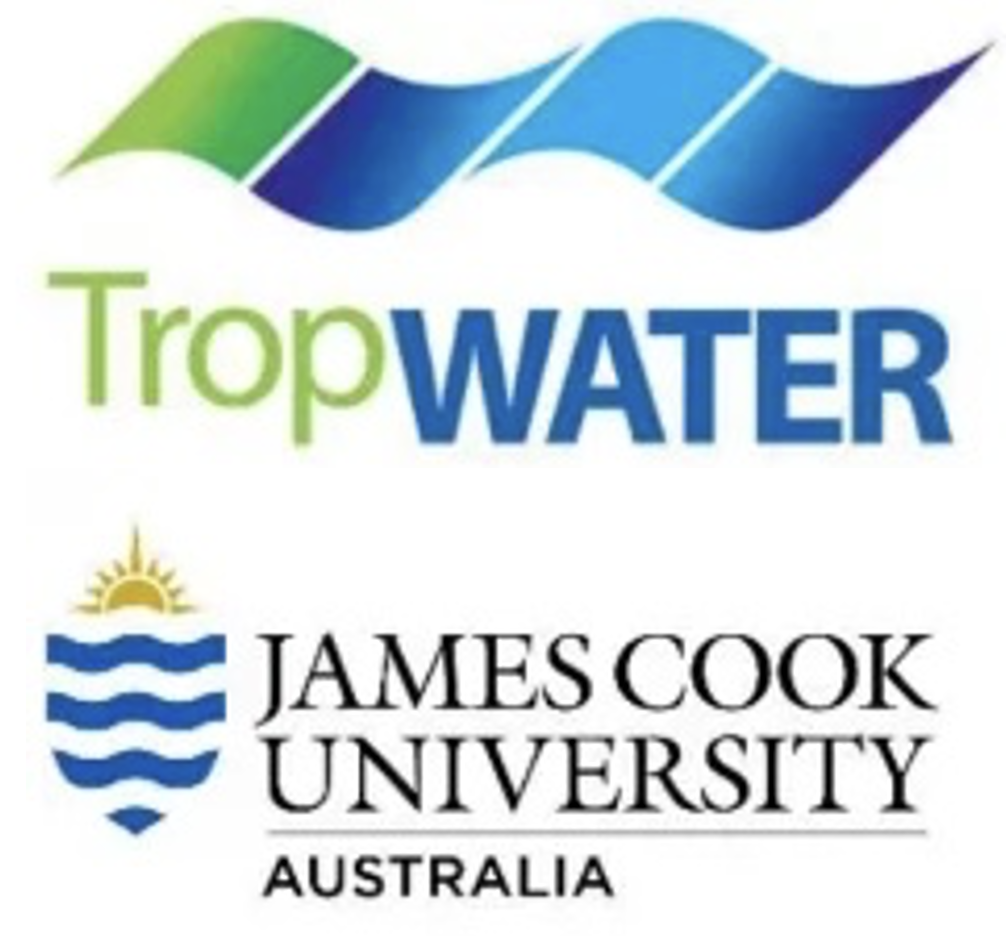
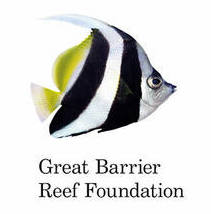

Participating ranger groups


